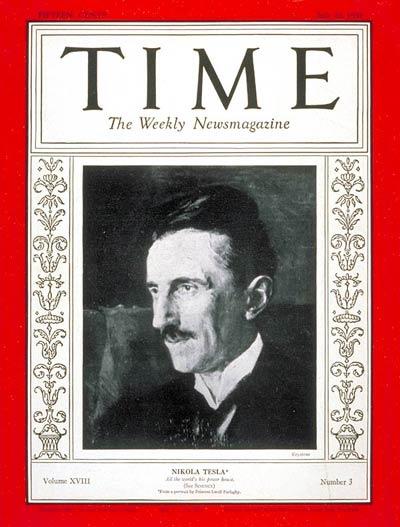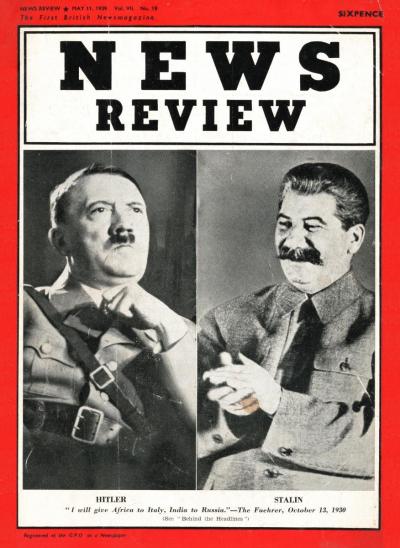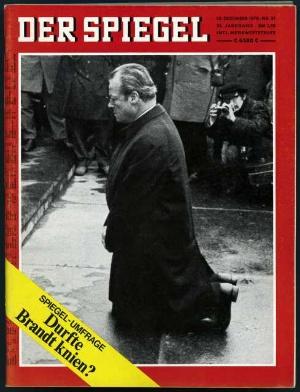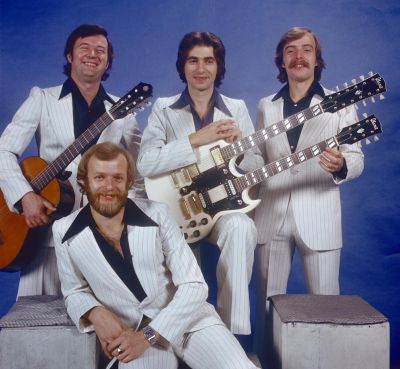Poland’s path to freedom on SPIEGEL covers 1980 to 1990
Mediathek Sorted

The first issue of the magazine appeared at the beginning of January 1947 and had only 28 pages. From the outset, the SPIEGEL[2] was created as an illustrated magazine and the influence of the weekly American news magazine “Time” and the British magazine “News Review” cannot be denied. Both magazines were given as sample copies to young SPIEGEL editors by British officers who oversaw the creation process of the magazine.[3] (Fig. 1-3) The publishers had articles from “Time” and “News Review” translated into German so that the editors could learn how to adapt the journalistic style that was unknown in Germany at that time. The graphic design also drew on the visual samples of the English-speaking opinion sheets. What Rudolf Augstein, the co-founder and long-time publisher, remembers about the layout is encapsulated in his laconic statement that the characteristic “eye-catching” dominant red colour of the cover is purely declaratory.[4] In actual fact, in the first few years it ranged between red and orange.
The cover of an illustrated magazine is its calling card. And this was true of the SPIEGEL too, whose cover gained almost cult status and became an integral part of the visual cultural heritage in Germany. At that time, the colourful covers of the new media in the kiosk windows, in which they vied for the attention of passers-by, became a kind of stage on which photographers and graphic designers shone. A turning point in the SPIEGEL’s ability to be recognised came in 1955 when the first issue was published with the reddy orange cover which is still a feature today and which was created by the long-standing head of the graphic design department, Eberhard Wachsmuth. (Fig. 4) The colourful frame on the cover has been a fixed element of the magazine ever since. The earlier layout from 1947 to 1954 still split the space into a red header, which took up the top third of the page, and a field underneath it with the actual cover image.
The SPIEGEL cover announced the theme of the week and illustrated it with a photograph, a photomontage or a cartoon. For every one of the 52 cover pages in a year, there were ten times as many drafts from which the editorial staff then chose the cover.[5] The cover design was also created by freelance graphic designers. Some of the most well known unquestionably included artists who, like Boris Artzybasheff, Jean Sole, Tilman Michalski, Ursula Arriens and the Pole Rafał Olbiński, had also worked for the weekly magazine “Time”.[6] Dieter Just’s research shows that cover pages with male likenesses were over represented until the middle of the 1960s. In 1956, 88 % of the cover pages showed images of men and 4 % showed women. The other covers featured inanimate scenes and objects.[7] For many years, these ratios did not really change much. But the visual design of the cover did. The proportion of photomontages or cartoons depicting scenes and personalities increased and the use of portraits declined. In all this, the covers of the SPIEGEL quickly became an institution in the German media landscape. In 1972, they were even exhibited at one of the most important art events in the world Documenta, which is held in Kassel every five years. This was not just due to their artistic value but also, in particular, to their relevance as a social iconography of everyday life which Harald Szeemann, the curator of Documenta 5, attributed to them. He selected 40 cover pages which were put together to form a series of prominent political events which, in his opinion, threw up topics of enormous importance not just to Germany society but also to world politics of the time.[8]
[1] Zeitung für Deutschland, [in:] “Frankfurter Allgemeine Zeitung” dated 1 November 1949.
[2] At the beginning, the weekly magazine was published in the British occupied zone under the title “Diese Woche” and was overseen by the British military government (six issues from November to the end of 1946).
[3] H. Hielscher, “Wollen Sie mitmachen?” Wie Diese Woche entstand und daraus Der Spiegel wurde, [in:] DER SPIEGEL, special issue 1947-1997, 0/1997, Hamburg 1997, p. 10ff.
[4] J. Bölsche (publ.), Rudolf Augstein. Schreiben, was ist. Kommentare, Gespräche, Vorträge, Deutsche Verlags-Anstalt, Stuttgart 2003, p. 67.
[5] Memo, [in:] DER SPIEGEL, 53/1970, p. 5.
[6] S. Aust, (Publ.), Die Kunst des Spiegel. Titel-Illustrationen aus fünf Jahrzehnten, Kempen 2004.
[7] D. Just, Der Spiegel. Arbeitsweise – Inhalt – Wirkung, Verlag für Literatur und Zeitgeschehen 1967, p. 99.
[8] cf.: L. Burckhardt, B. Brock, H.H. Holz (and many others), documenta5. Befragung der Realität – Bildwelten heute. Katalog, Vol. 1 and Vol. 2, Kassel 1972.







































































































